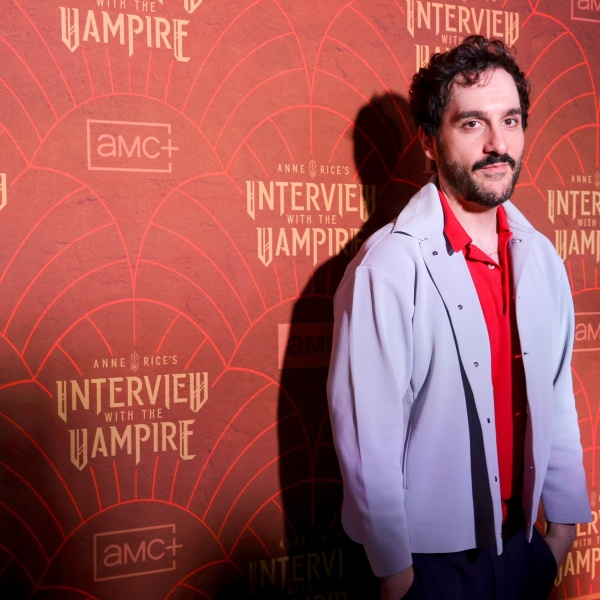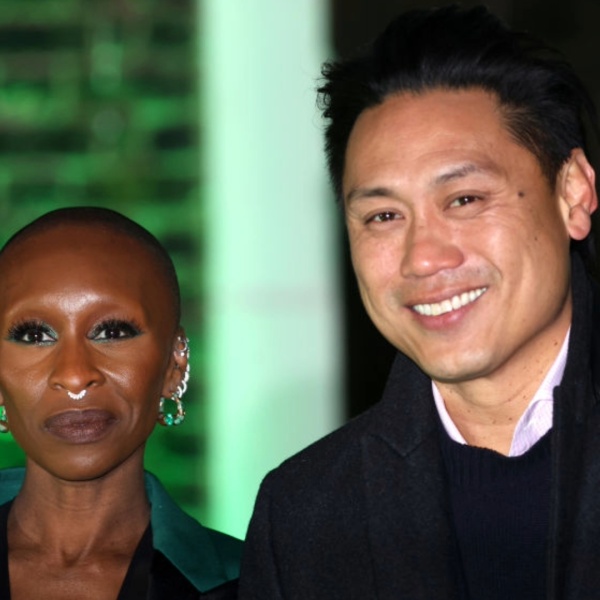Reader, you have been lied to! Film history is littered with unfairly maligned classics, whether critics were too eager to review the making of rather than the finished product, or they suffered from underwhelming ad campaigns or general disinterest. Let’s revise our takes on some of these films from the wrongheaded to the correct opinion.
The list of sequels to masterpieces that can be considered masterpieces themselves isn’t a very long one; “The Godfather Part II” is an obvious candidate, and arguments can be made for James Cameron‘s “Aliens” and “Terminator 2: Judgment Day.” “Blade Runner 2049,” “Mad Max: Fury Road,” and “The Color of Money” all have their partisans, and Ingmar Bergman scored a late-career triumph with his “Scenes From a Marriage” sequel “Saraband.” One movie that almost never gets mentioned in this company is “The Two Jakes,” the 1990 sequel to “Chinatown” directed by its star, Jack Nicholson. That’s a shame, because “The Two Jakes” is not only better than its reputation, it’s better than the classic that inspired it — broader in its tonal range, subtler in its observations, and more adventurous in its narrative structure.
Yes, 1974’s “Chinatown” is unquestionably one of the great films of its era, a detective story set in ’30s Los Angeles that fulfills the requirement of any great period piece: It’s equally profound as a response to the time in which it takes place, the time in which it was made, and the time in which the audience is viewing it — no matter what time that is. The story works as both an intimate character study and sweeping epic, as screenwriter Robert Towne integrates hero Jake Gittes’s personal story with a historically astute condemnation of the pillaging of Los Angeles’ natural resources in the early 20th century. In 1974, the movie’s bleak depiction of institutional corruption couldn’t help but evoke thoughts of Vietnam and Watergate; now, its most resonant element is the characterization of the villain played by John Huston, a rapist of both the land and his daughter whose insatiable urge to devour everything and everyone in his path feels increasingly familiar.
One of the most interesting choices “Chinatown” director Roman Polanski made was to avoid any overt stylization when replicating the period; although the costumes and production design evoke classic noir pictures such as “The Maltese Falcon,” the lighting and framing are unobtrusive and shot in a contemporary style. Cinematographer John Alonzo eschewed diffusion to give the film a greater sense of immediacy and shot a great deal of “Chinatown” with a 40mm anamorphic lens to replicate human perception as closely as possible. The use of the anamorphic frame also allows the viewer to see both action and reaction in the same shot, a potent visual approach in a film where characters are constantly trying to decipher each other’s lies.
“The Two Jakes” is both a deepening of its predecessor’s ideas and a response to the original film that reverses many of its stylistic tropes and philosophical conclusions. Nicholson abandons the ’scope aspect ratio of Polanski’s film in favor of the narrower 1.85 frame, an appropriate choice given the increasingly constricted world that Gittes inhabits. He also eschews Polanski’s relatively objective, detached style in favor of a more subjective approach with more self-conscious camera movement and a greater variety of focal lengths, which gives “The Two Jakes” a more lively quality than “Chinatown” in spite of the fact that in many ways it’s an even sadder film, a longing meditation on regret and memory. In the years following the events of “Chinatown,” Gittes has become more successful but less open; the psychic pain inflicted upon him by the events of the previous movie has left the detective a shell of his former self. A new case unexpectedly dredges up unpleasant memories, and the more Gittes moves forward with the present-day investigation, the deeper he ends up burrowing into his own troubled past.

“The Two Jakes” is perhaps more intricately interwoven with its predecessor than any sequel in film history, a likely reason why audiences who saw it on its initial theatrical release often found it confusing. Understanding both the plot and the film’s emotional resonances requires an intimate familiarity with “Chinatown,” a movie that was 16 years in the rearview mirror when “The Two Jakes” opened in 1990. (Another underrated 1990 follow-up to a ’70s classic, Peter Bogdanovich’s “The Last Picture Show” sequel “Texasville,” suffered a similar fate; the third of 1990’s belated sequels, “The Godfather Part III,” fared better at both the box office and the Oscars.) The rewards for viewers patient enough to give both films the close scrutiny they deserve, however, are immense and numerous — few major studio movies require as much of the audience as “The Two Jakes,” but even fewer pay back that effort so generously.
The plot of “The Two Jakes” is so convoluted that it makes the original “Chinatown” look like “Runaway Bride,” but contrary to negative critical responses it does make perfect sense, its interlocking pieces clicking into place in the final moments just as conclusively as in Towne’s justly exalted screenplay for the first movie. What makes “The Two Jakes” both more difficult than “Chinatown” and, ultimately, a greater achievement is the added degree of moral ambiguity. “Chinatown,” for all of its insights — and they are voluminous — leaves the audience with a relatively clear-cut moral perspective on the situations and characters. There’s no question of who the villains are, who the victims are, what Jake Gittes’ mistakes were, and how we’re supposed to feel about all of it. It’s a haunting and beautiful film, but a pat one.
“Chinatown” concludes with a devastating tragedy, and part of the movie’s greatness comes from the way Towne and Polanski let the cost of Gittes’ mistakes linger in the mind after the final credits roll. “The Two Jakes” is a film about how Gittes lives with that cost and how none of his attempted distractions from the past — work, alcohol, women — can fully suppress his memories. What “The Two Jakes” gets right about mourning and regret is the way that the dull ache of the past can coexist on a parallel track with forward momentum and humor; although nearly every scene of the film is permeated with loss and bewilderment, there’s a sprightly quality to the witty dialogue, brisk pacing and vivid palette — each scene teems with contradictory emotions and evokes contradictory responses in the audience, giving the film a breadth lacking in the original.

Although the screenplay is once again credited to Towne, its philosophical orientation is as different from the original’s as Nicholson is a different director from Polanski. The brutal — and completely justified coming from a director who at that point had endured both the Holocaust and the murder of his wife and unborn child — cynicism of “Chinatown,” with its evocation of pure evil, is answered in “The Two Jakes” with a softer and more empathetic view of human nature. Although it tells another tale of wrangling over lucrative natural resources — oil and mineral this time instead of water — “The Two Jakes” is a movie where the crimes, no matter how horrible, have their roots less in greed than in love and good, if misguided, intentions.
Most of the movie’s many sins begin with a desire to protect someone, the same thing that got Gittes into trouble in “Chinatown,” and what makes “The Two Jakes” so endlessly fascinating is the fact that it’s a murder mystery without a real villain — a bold risk in a sequel to a movie with one of the most chilling villains of all time. It’s a risk that pays off, as the movie’s final scenes upend all of our assumptions about the characters Gittes has been investigating throughout the film and provide several somber, bittersweet revelations that poignantly illustrate Jean Renoir’s dictum about the most horrible thing in life being that everyone has their reasons.
Tying all of this together is a knowing voice-over narration by Gittes that plays counterpoint to the ambiguity of the plot that he’s unraveling, another difference between “The Two Jakes” and the narration-free “Chinatown.” The narration is filled with sharp observations that articulate many of the movie’s themes, yet the irony is that while Gittes has a clear understanding of some of the issues at stake, he’s still blind to how they apply to his own life and his own case — his voiceover transmits confident wisdom, but his intellectual prowess proves unable to fully fathom the mysteries of the human heart. Even when Gittes does gain knowledge, it isn’t worth much; one of the film’s funniest and most pointed exchanges comes when a character asks Gittes if he’s happy, and he says, “Who can answer that question?” (The response: “Anyone who’s happy.”)

The voiceover was evidently an after-the-fact addition during editing when Nicholson found that the plotting in “The Two Jakes” was impossible for audiences to follow, but it feels so organic that it’s hard to believe it didn’t exist in the screenplay from the start. Nevertheless, the problems Nicholson had in the editing room with “The Two Jakes” were widely speculated about in the press when the movie’s release date kept moving. This was after an aborted attempt to make the movie in the mid-’80s with Robert Towne directing (and producer Robert Evans as the other “Jake,” eventually played by Harvey Keitel) that ended with the plug pulled on the first day of production. As is so often the case, commentators at the time tended to review the making of the movie (or what they thought they knew about the making of the movie) instead of the movie itself, leading to a number of pieces that described the film as a mess.
“The Two Jakes” is a mess, in the sense that life is a mess — its characters’ tendencies to act against their own self-interest and the complications that result give it an insight into human nature that only seems more distinctive and profound on every repeat viewing. A handful of critics like Roger Ebert recognized the film’s greatness, but “The Two Jakes” vanished from theaters before the ink was dry on their reviews.
Nicholson never directed again, which is a shame; in “The Two Jakes,” he shows an unerring talent for finding a visual grammar that both brings out the dramatic tensions inherent in the material and adds another layer to them, and his direction of the other actors is extremely generous. He consistently gives Madeleine Stowe, James Hong, Meg Tilly, Frederic Forrest, Richard Farnsworth, and others the best lines and moments, though it’s not entirely selfless. By withholding his own best work until the film’s final moments, Nicholson creates a performance that lingers in the mind and lays the groundwork for his excellent ’90s films like “Hoffa” and “As Good as It Gets” that combine the restrained naturalism of his work in the ’70s with the more theatrical side that emerged in the 1980s. In “The Two Jakes,” all Nicholson’s strengths as actor and director come together in one towering achievement — a movie that deserves to be ranked among his very best.




